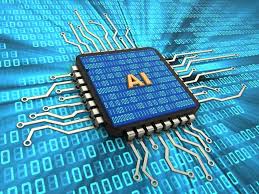posted on Oct 20, 2017 by NelsonHall Analyst

Nvidia faces stiff new competition for the leadership position in the AI processing chip market. But the firm has a significant competitive advantage: a culture of innovation and production efficiency that was developed to address the demanding needs of a wholly different market.
Intel and Google have been making waves in the AI processing chip market, the former with the acquisitions of Nervana Systems and Mobileye, the latter with the new Tensor Processing Unit (TPU) announcement. Both are moves intended to compete more directly with Nvidia in the burgeoning market for AI processing chips.
James Wang of investment firm ARK recently set forth his long-term bet on the industry – and it favors Nvidia. Wang posits that products like TPU will be less efficient than Nvidia GPUs for the foreseeable future, arguing that “…until TPUs demonstrate an unambiguous lead over GPUs in independent tests, Nvidia should continue to dominate the deep-learning data center.”
Wang is right, but his opinion may not actually go far enough in explaining why Nvidia should enjoy a sustainable advantage over other relative newcomers, despite their resources and experience in chipbuilding. That advantage, by the way, doesn’t have a thing to do with Google’s chip fabrication expertise, or Intel’s understanding of the needs of the AI market. It’s a deeper factor that’s seated firmly in Nvidia’s culture.
Cutting-edge engineering & savvy pricing: key strengths forged in the gaming cauldron
By the time 2017 dawned, Nvidia owned just over three-quarters of the graphics card segment (76.7%), compared with main competitor AMD’s one-quarter (23.2%). But that wasn’t always the case. In fact, for much of the past decade, Nvidia held an uncomfortable leadership position in the marketplace against AMD, sometimes leading by as few as ten points of market share (2Q10).
During that time, Nvidia understood that a misstep against AMD in bringing new products forth could yield the market leader position, and even send the company into an unrecoverable decline if gamers – a tough audience to say the least – lost confidence in Nvidia’s vision.
As such, Nvidia learned many of the principles of design thinking the hard way. They learned to fail fast, to find new segments in the market and exploit them – as they did with the GTX 970, a product that stunned the marketplace by being priced underneath its predecessor at launch – and to take and hold ground with innovation and rapid-cycle development. More importantly, they learned how to demonstrate value to a gamer community that wanted to buy long-term performance security when it was time for a hardware refresh. In short, they learned to understand the wants and needs of an extraordinarily demanding consumer public, in the form of gamers, and relentlessly squeezed their competition out with a combination of cutting-edge engineering and savvy segment pricing.
Much of the real-world output from that cultural core of relentless engineering improvement is the remarkable pace of platform efficiency that Nvidia has achieved in its GPU chips. The company maintained close ties with leading game publishing houses, and as a result kept clearly in mind what sort of processing speed – as well as heat output and energy draw – cutting-edge games were going to require. At multiple points in time, the standards for supporting new games have meaningfully advanced inside eighteen months. This often mandated that Nvidia turn over a new top-end GPU processing platform on a blistering production timeline.
In response, Nvidia turned to parallel computing, an ideal fit for GPUs, which already offered significantly more cores than their CPU cousins. As it turned out, Nvidia had put itself on the fast track to dominating the AI hardware market, since GPUs are far better suited for applications, like AI, that demand computing tasks work in parallel. In serving one market, Nvidia built a long-term engineering and fabrication roadmap nearly perfectly suited for another.
The competition is hot, but Nvidia poised to win?
Fast forward to 2017, and some are questioning whether Nvidia is in the fight of its life now with new, aggressive competitors seeking to take away part – or all – of its AI GPU business. While Wang has pushed his chips into the center of the table on Nvidia, others are unconvinced that Nvidia can hold its lead – especially with fifteen other firms actively developing Deep Learning chips. That roster includes such notable brands as Bitmain, a leading manufacturer of Bitcoin mining chips; Cambricon, a startup backed by the Chinese government; and Graphcore, a UK startup that hired a veritable ‘who’s who’ of AI talent.
There’s no shortage of innovation and talent at these organizations, but hardware is a business that rewards sustained performance improvement over time at steadily reducing cost per incremental GFLOPS (where a GFLOP is one billion floating point operations per second). The first of these components is certainly an innovation-centric factor, but the second rewards organizations that have kept pace not only with the march of performance demands, but the need to justify hardware refresh with lower operating costs. Given that this is an area where Nvidia shines, as a function of its cultural evolution under identical circumstances in gaming, the sector’s long-term bet on Nvidia is the correct call.
Dave Mayer is currently working on a major global project evaluating RPA & AI technology. To find out more, contact Guy Saunders.

